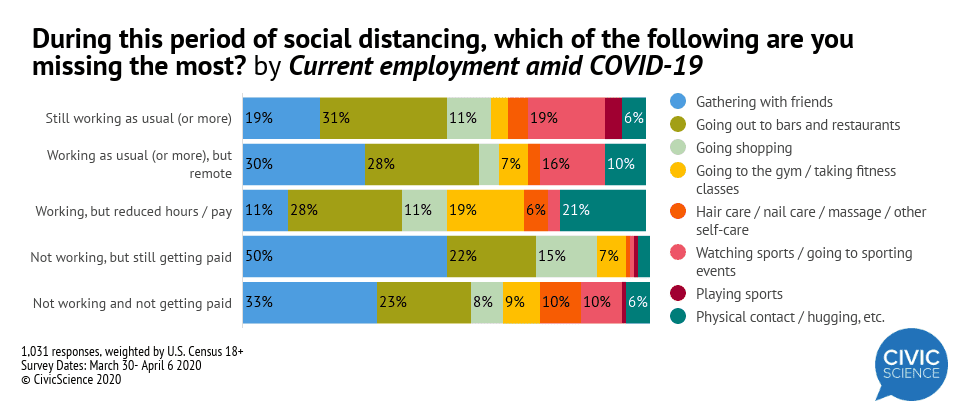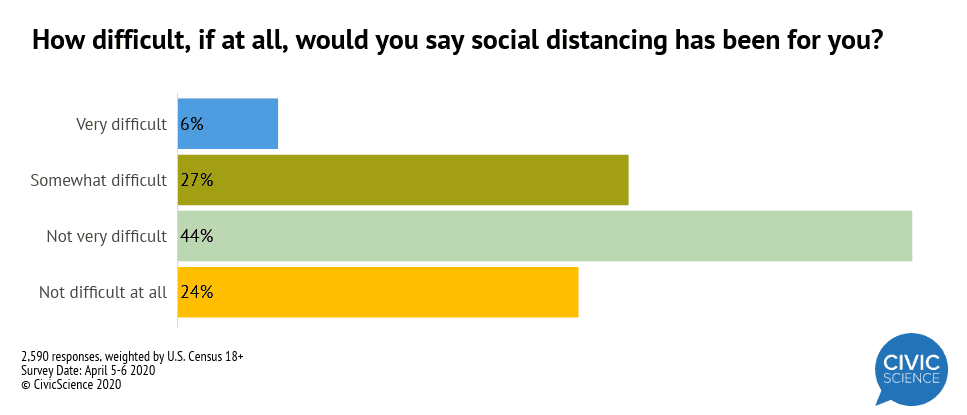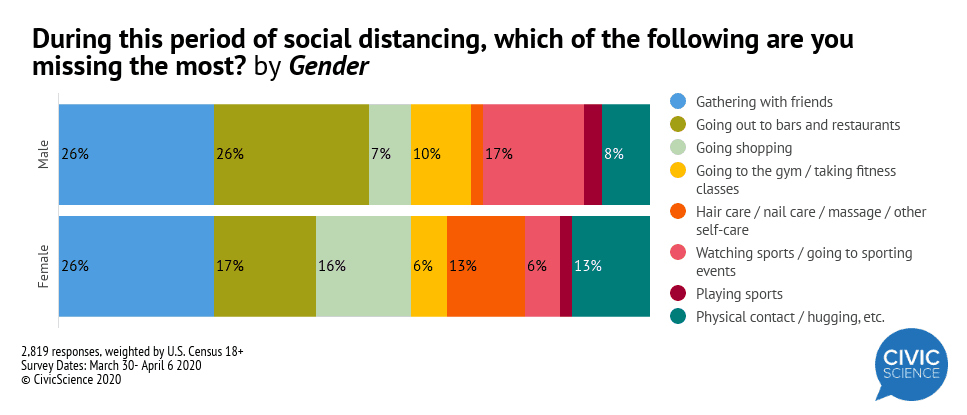It’s important to remember that social distancing is easier for some than it is for others. Feelings of isolation can be spurred from lack of physical human interaction, loss of routine, and other factors, while staying in may very well feel like the norm for some. Changing our lives due to the pandemic can feel anything but normal, and we all vary in how much we are adapting to life under stay-at-home orders.
According to a CivicScience survey of more than 2,000 U.S. adults this week, the population is pretty split in terms of how one views the difficulty level of social distancing. While the majority of the population hasn’t found it all that difficult (68% saying ‘not very difficult’ + ‘not difficult at all’), still, 33% of adults find it at least somewhat difficult.
Those who feel comfortable being alone are more likely to take the social distance in stride, and those who prefer to be around others are having a harder time. It’s certainly no easy feat to stay home when being around others brings you the most energy or you consider yourself to be outspoken.
Those who are not working but still getting paid find social distancing the most difficult. Those working the same as usual, more, and / or remote are close seconds. Relating with others is often how we deal with day-to-day stress, and if you’re not working, lost your job, or isolated at home, social distancing may feel more difficult.
More nuances can be found when we break down what exactly people miss the most during this period of social distancing. In another study of more than 4,000 U.S. adult respondents, gathering with friends is missed the most by just over one-fourth of the population, followed by dining / drinking out in a close second.
Maybe surprisingly, other hobbies or activities are less missed at similar rates as each other. Watching sports, going shopping, and physical touch are considered to be missed the most by 10-11% of the adult population. Fitness classes, self-care practices, and playing sports are only missed by a smaller percentage of the population.
Younger people are missing seeing their pals the most, and less likely to say they miss bars and restaurants the most compared to their demographic counterparts. Gen Z is also the group most likely to say they miss playing sports the most, while older Americans miss physical touch.
Relationship status has a good bit to do with what a person misses amid the pandemic, too. While married and unmarried people miss things at nearly identical rates, there are more nuances among other groups. Those who are widowed miss shopping more than any other marital demographic. Physical contact is most missed by this those who were previously married, too.
Another key finding is that women miss bars and restaurants at a much lower rate than men do. Men and women are just as likely to miss gatherings with friends, though. The other distinctions are more intuitive.
What you miss the most may be driven by how your work life has (or has not) been impacted by the COVID-19 pandemic. Those working as usual or more and especially those who are working remotely are the most likely to miss gatherings of friends and going out. Interestingly, those who have lost their jobs or are not working (but with pay) are most likely to be in the same boat, followed by those who lost their job and income. No matter where you fall on the spectrum, you need your friends to help get you through this tough time.

When cross-tabulating the two survey questions in this study (social distancing difficulty and what people miss the most), the data tell us that those taking social distancing the hardest miss seeing people and going out the most, to no surprise.
While stay-at-home orders are crucial to stop the COVID-19 spread, they have a slew of unintended implications on people’s mental health and well-being. CivicScience will continue to track this topic throughout the course of this pandemic and beyond.














